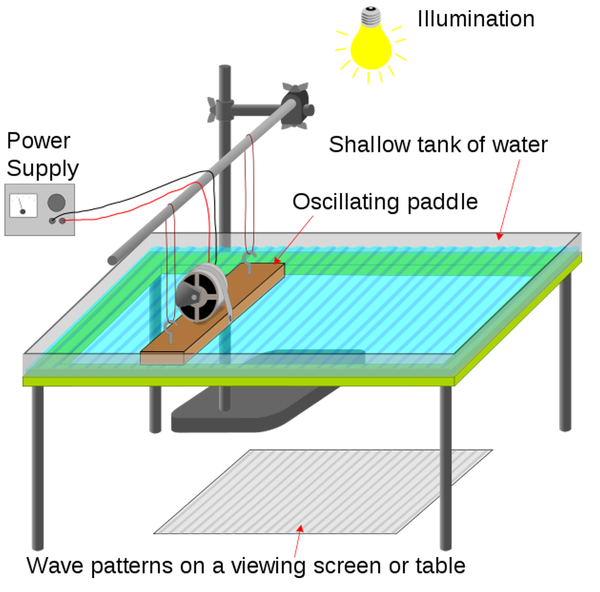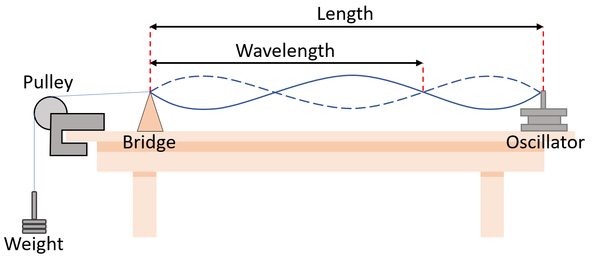Difference between revisions of "GCSE Physics Required Practical: Investigating Mechanical Waves"
(→Improving Precision) |
|||
| Line 1: | Line 1: | ||
==Key Stage 4== | ==Key Stage 4== | ||
| + | {{#ev:youtube|https://www.youtube.com/watch?v=OY0lXHPo_nM}} | ||
===Meaning=== | ===Meaning=== | ||
Investigate the features of [[Mechanical Wave|mechanical waves]]. | Investigate the features of [[Mechanical Wave|mechanical waves]]. | ||
Revision as of 11:34, 13 April 2019
Contents
Key Stage 4
Meaning
Investigate the features of mechanical waves.
Experiment 1: Ripple Tank
Method
| A diagram of the apparatus used to investigate the features of mechanical waves. |
- Set up the equipment as shown in the diagram.
- Count the number of waves that pass a given point over 10 seconds.
- Divide the number of waves by the 10 seconds to find the frequency of the waves.
- Measure the length of the ripple tank from paddle to end using a ruler.
- Use a stopwatch to time how long it takes for a wave to travel this displacement.
- Use the equation \(v=\frac{s}{t}\) to find the velocity of the wave.
- Use the equation \(v=f \lambda\) to find the wavelength of the wave.
Improving Accuracy
- Count the number of waves over a greater period of time greater than 10 seconds to reduce the effect of human error on the frequency.
Experiment 2: Waves on a String
Method
| A diagram of the apparatus used to investigate the features of a wave on a string. |
- Set up the equipment as shown in the diagram.
- Adjust the frequency of the oscillator until it produces a clear wave on the string.
- Record the frequency of the oscillator.
- Measure the wavelength of the wave using a ruler.
- Use the equation \(v=f \lambda\) to find the wavespeed of the wave.
- Repeat for different 5 frequencies of the wave.

